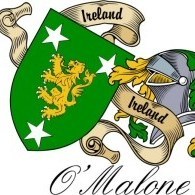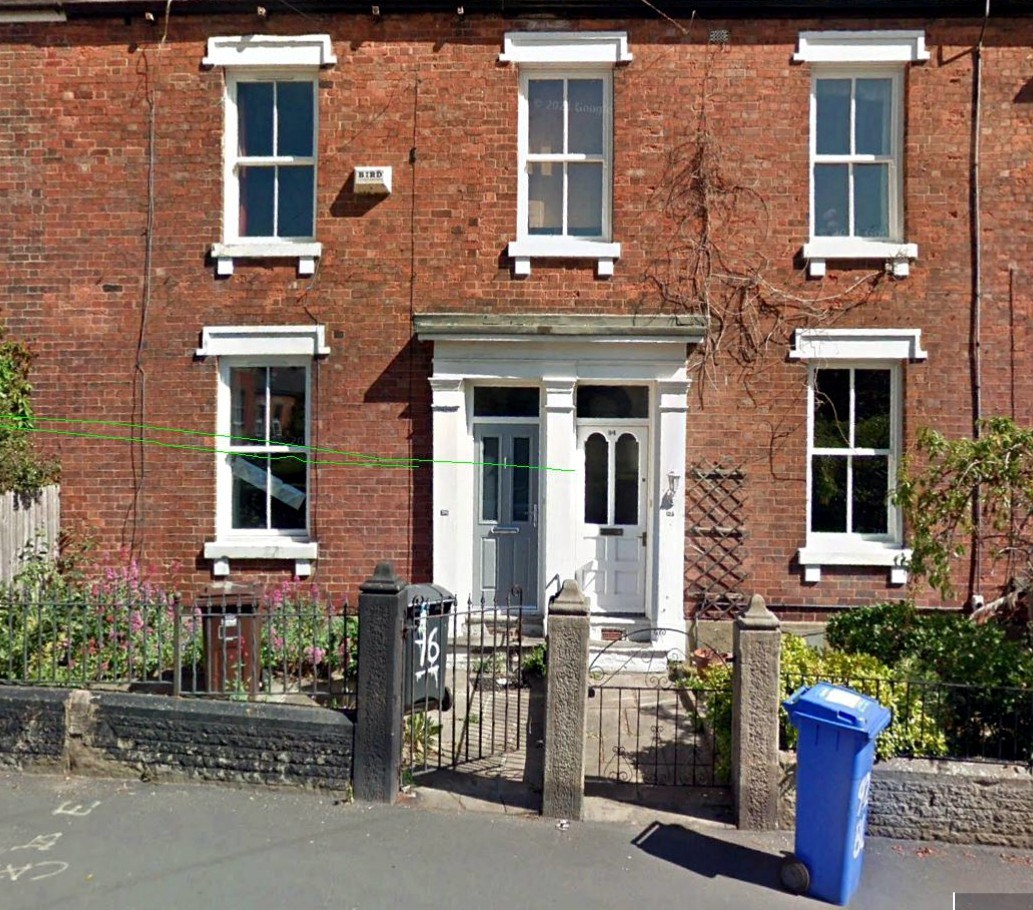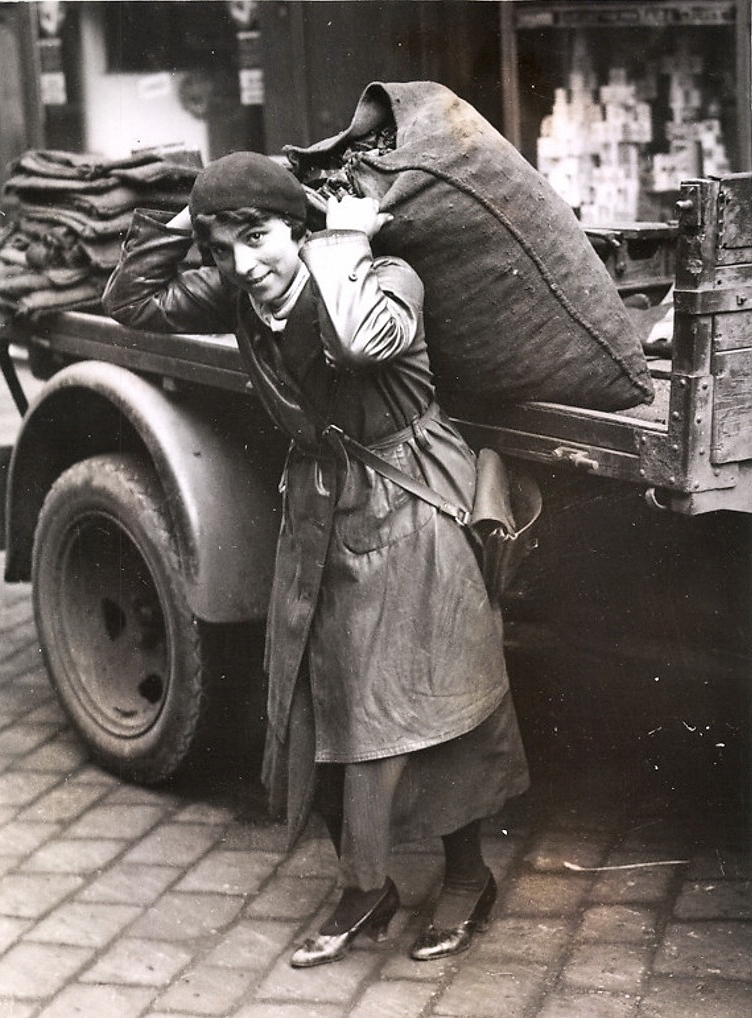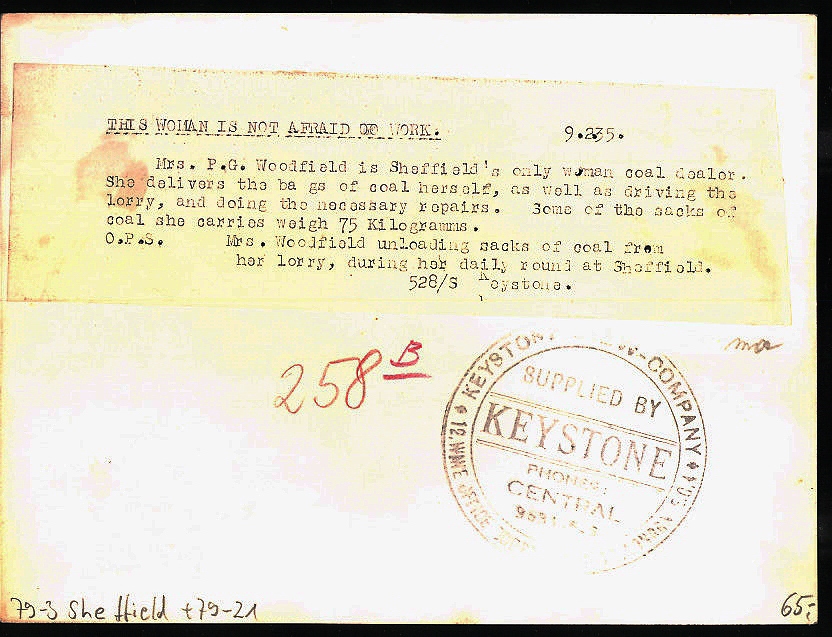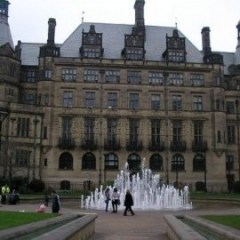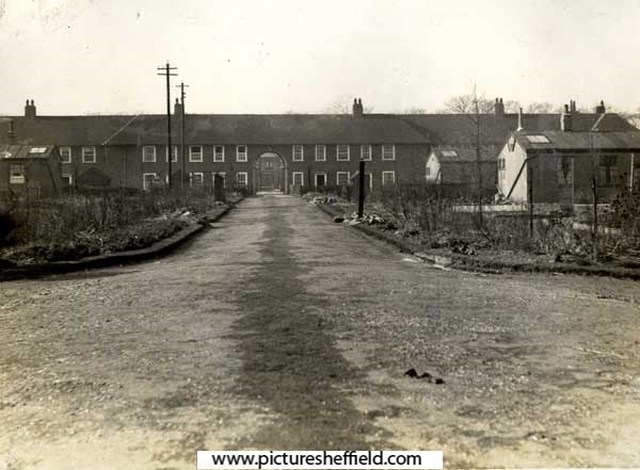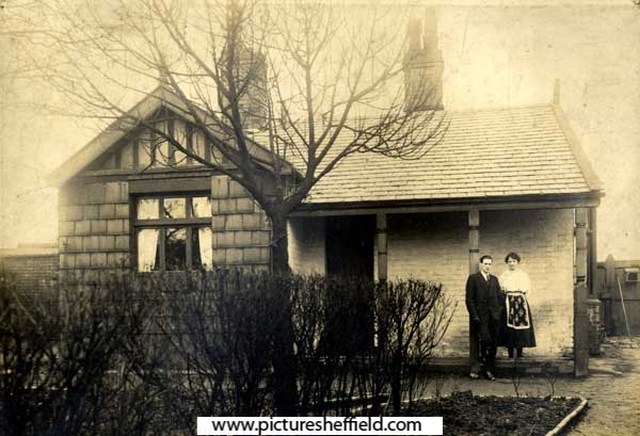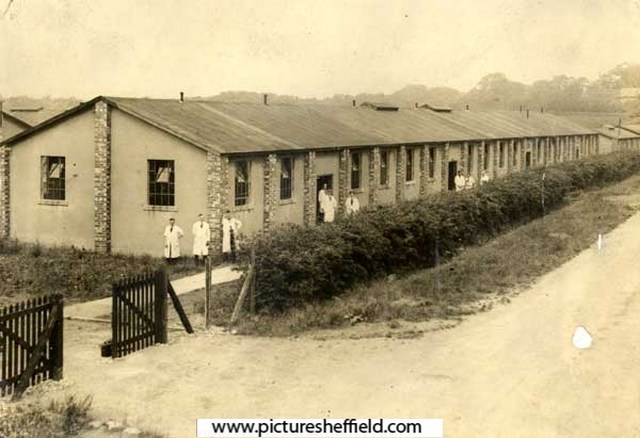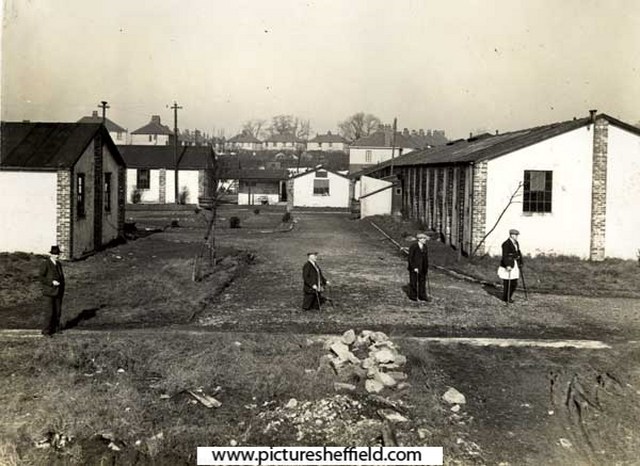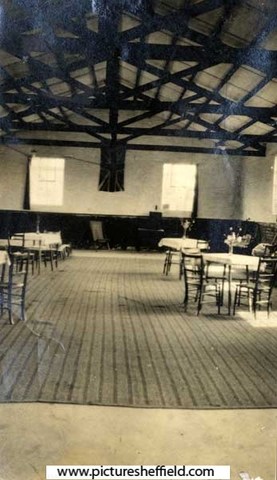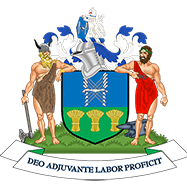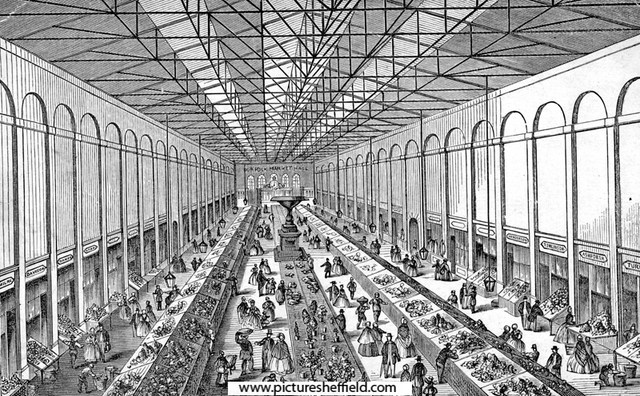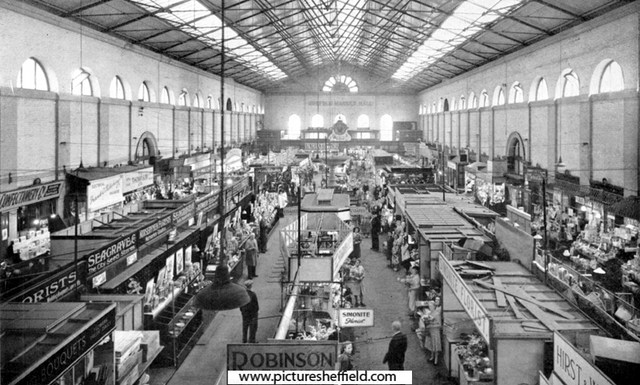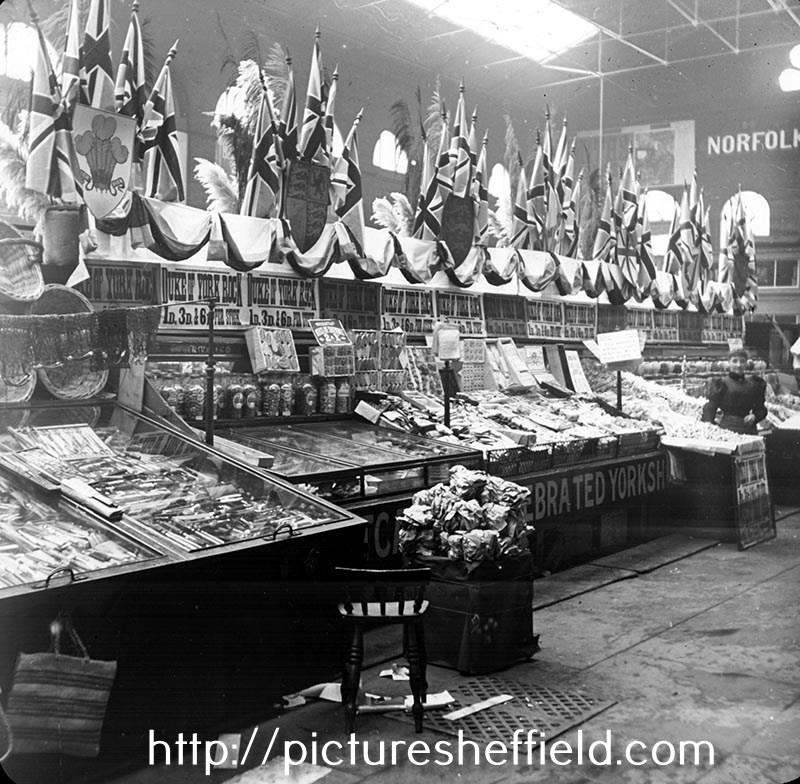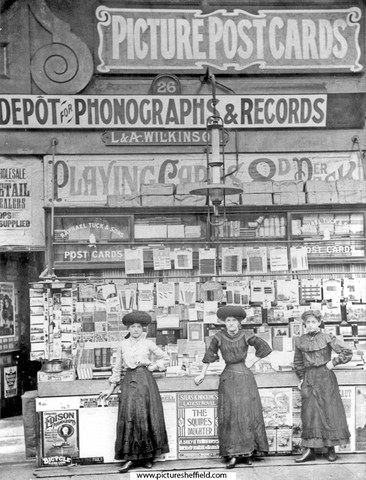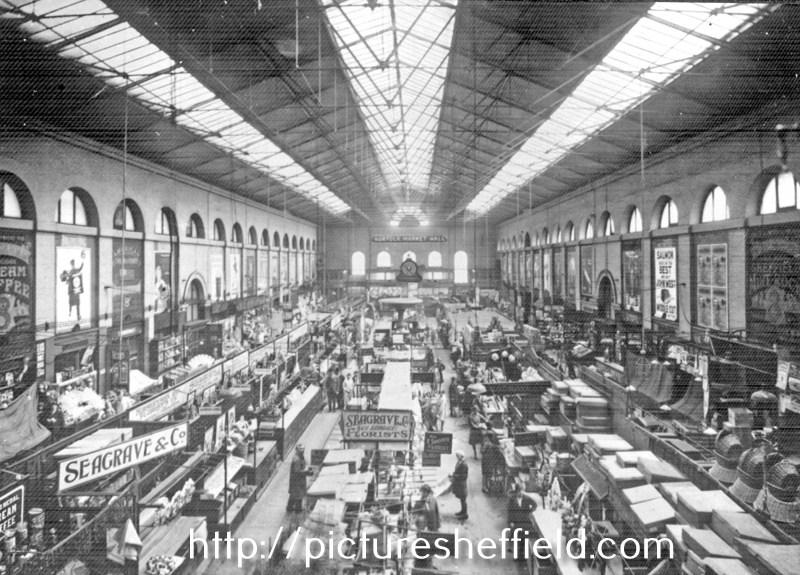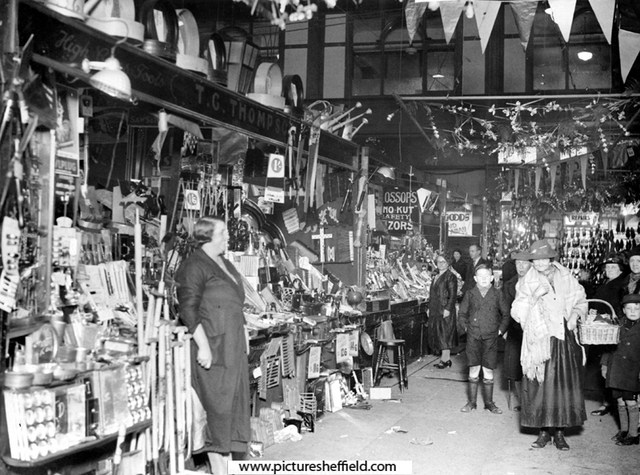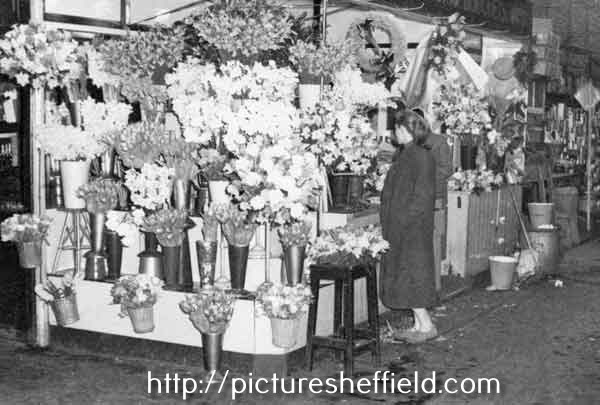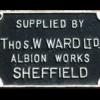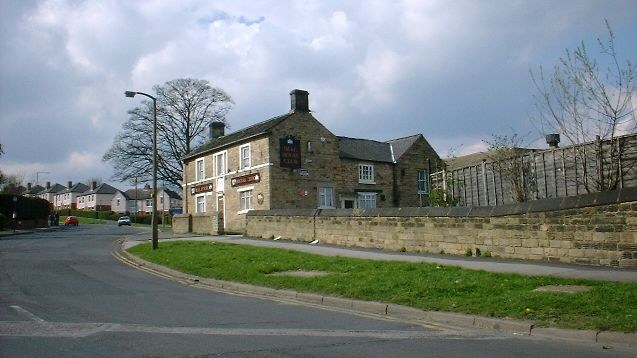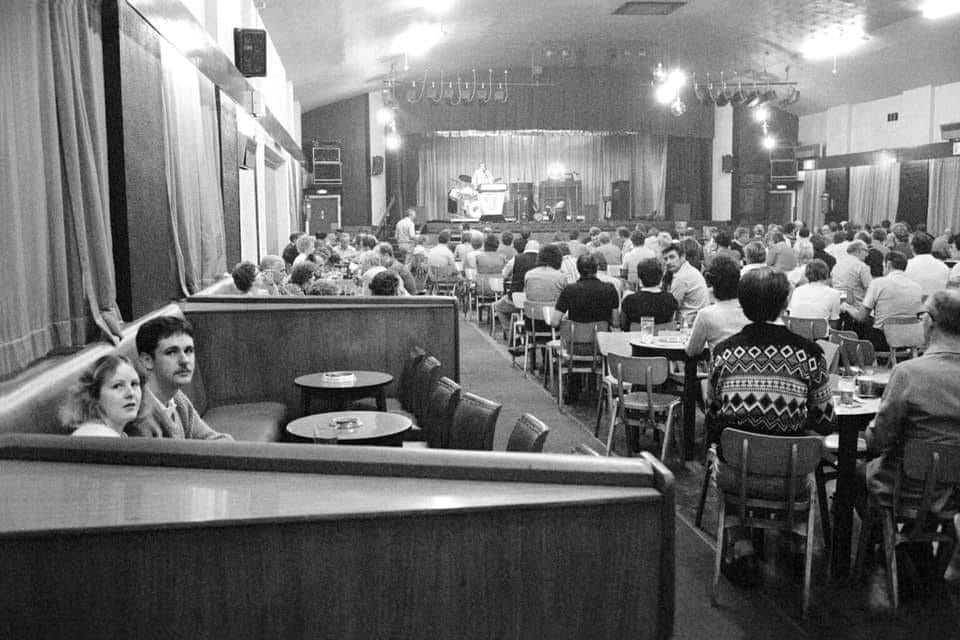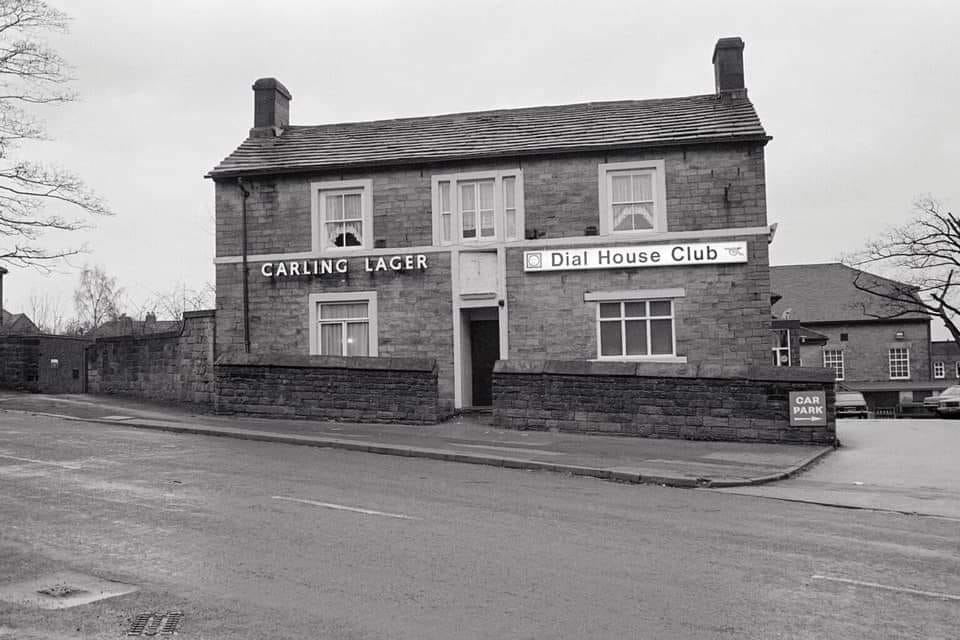Search the Community
Showing results for 'coal pit lane'.
Found 10,016 results
-
A plan of several proposed building lots [tenements between Holly Street and Holly Lane, including property on West Street] 1790. Property on the west side of Holly Street [Blind Lane]. Some yardage given. Includes reference to Red Croft. https://www.picturesheffield.com/frontend.php?keywords=Ref_No_increment;EQUALS;arc03200&pos=48&action=zoom&id=98268 Property in Red Croft which became known as the Brown Cow is shown as owned by Geo. King.
-
After my initial post found this Link to: A Very Difficult Question. https://www.sheffieldhistory.co.uk/forums/topic/7409-a-very-difficult-question/ Found these posts intriguing thanks Stuart0742 & RichardB. I'm so glad I found the plan of Brown Cow, Red Croft. Next step needed: detailed maps of Red Croft/Trippet Lane from 1840`s upwards and any information from newspapers regarding the road improvements on Trippet Lane.
-

Maps of the Parish of Handsworth, based on the Enclosure Award Maps (1805) and corrected up to 1855.
Ponytail replied to Ponytail's topic in Sheffield Maps
Map of Woodthorpe Common, c.1855 https://www.picturesheffield.com/frontend.php?keywords=Ref_No_increment;EQUALS;arc02932&pos=6&action=zoom&id=93431 Includes: Woodhouse Road, Richmond Road, Normanton Hill, Four Lane Ends, Birley Vale Branch Railway and Intake. From a volume of Maps of the Parish of Handsworth, based on the Enclosure Award Maps (1805) and corrected up to 1855. Shows: Coke Ovens. Dimensions of original: 34 x 51cm. Original at Sheffield City Archives: CA369/1. -

Maps of the Parish of Handsworth, based on the Enclosure Award Maps (1805) and corrected up to 1855.
Ponytail replied to Ponytail's topic in Sheffield Maps
Map of Richmond, Woodthorpe, etc. c.1855 https://www.picturesheffield.com/frontend.php?keywords=Ref_No_increment;EQUALS;arc02933&pos=7&action=zoom&id=93433 Includes Woodhouse Road, Richmond Road, Normanton Hill, Four Lane Ends, Birley Vale Branch Railway and Intake. From a volume of Maps of the Parish of Handsworth, based on the Enclosure Award Maps (1805) and corrected up to 1855. Shows: Coke Ovens. Dimensions of original: 34 x 51cm. Original at Sheffield City Archives: CA369/1. -

Sheffield Boys Working Home for Destitute Boys, 82 Broomspring Lane
Ponytail replied to Ponytail's topic in Sheffield History Chat
Boys Working Home at 82 Broomspring Lane, 1901 Census. Run by Alfred Stubbing and his wife Sarah. https://www.ourbroomhall.org.uk/content/explore/places/hospitals-and-homes/boys-working-home-82-broomspring-lane-1901-census See also the Comments below the article. "If you Check out the Sheffield Daily Telegraph 7/12/1918 there is an article about some of the former boys that served in WW1 By Nick Beeley (31/10/2017)" " My wife’s grandparents (Windle) also ran this home in the early 1900’s. She has a write up about it and photos of the boys during this period. Copies available to anyone interested. By Tony Biles (09/10/2015)" -
Does anyone know whereabouts on Claywheels Lane they were located?
-
Norfolk Street & Beyond Before we escape back to 19th century Sheffield, I must thank Jane Salt the Stars Archivist for helping with my research, back to when thing seemed more refined. The clue picture on page two shows decorative carvings on what is now the Wicker Herbalist Stores, formerly Hibbert`s Art shop on Norfolk Street. Hibbert Brothers vacated the shop in 1998, the Star covered this event with a brief history of William and James Hibbert, it was claimed, quite wrongly, that the shop had opened in Norfolk Street in 1833, in that year Henry Thomas, a Doctor/ Surgeon, was living and practising from his house at 79 Norfolk street, which wasn’t the original postal number of Hibbert's shop, it was originally 38, it is a fact that William Hibbert was conducting his business at 78 Fargate (now Exchange Gateway) as a carver and gilder and its listed as an artists repository, William lived on the premises, his brother in law George Marples had the same occupation and was going about his business at 31 Church Street and he lived at 59 Bernard Street with his family. John Hibbert, Williams brother was also a carver and gilder plus a picture frame maker, map stretcher and varnisher, John was based on Chester Street, this street has been lost completely, thank you Sheffield council. By 1849 Henry Thomas the Surgeon took on a partner for his practice because of his growing practice, John Taylor Porter changed the practice name to Thomas & Porter, John Porter had been living at 27 Norfolk Street, so it was just a short walk to the practice, I could only speculate on what happened to these two doctors but I suspect they two partners decided to retire, Henry Thomas died in 1882, while his partner John Porter had died just eight years before him, so they must have sold the practice prior to 1852 as by that year Doctor / Surgeon Thomas Chesman who was the senior surgeon at the Public Hospital, Later the Royal Hospital, was holding his surgeries from the practice, sadly Thomas Chesman left this life on the 9th of November 1874, as the years passed the property, had had its postal number changed twice from 115 to what it is today 117, in 1893 William Murfin the London & North Western Railway Co goods manager was living at the property which is now Mammas & Leonie’s Pizza Parlour. So it looks as though Hibbert Brothers moved into the premises round about the late 1890s are now supplying the needs of both professional and amateur artists in the town, so they had only been selling their wares from Norfolk Street for just over a hundred years not 164 as claimed but that’s irrelevant as its still an important part of Sheffield’s history. By 1905 William Hibbert was living at 96 Broomspring Lane and John lived at 9 Westbourne Road the other brother Samuel George was residing at 42 Brocco Bank. This area of the town was always busy especially when the Surrey Street Music Hall was open, this grand theatre was built in 1823, it was more than just a Music Hall as its largest room accommodated 1,000 people quite easily, this theatre was just one of many in the town, the Gaiety, the Britannia, the Grand, the Phoenix, the Theatre Royal and of course Tommy Youdan’s which was the Alexandre Theatre on Blonk Street, I cant name them all but it was a cut throat business and nobody made a fortune out of them, if one owner or manager was breaking the rules, a rival sent in a spy to report back which in turn an official complaint was made against them via the watch committee. The Surrey was regarded as one of the best, if not the best, the world famous violinist Paganini performed here to a rapturous audience as did Jenny Lind, the Swedish Nightingale, one celebrity who was small in stature but a giant on stage was General Tom Thumb who gained stardom through P. T. Barnum. Mr Charles Dickens, England’s greatest author, appeared here several times, in 1852 acting as manager and actor he performed along with Mr Wilkie Collins, in a play entitled “Not So Bad As We Seem”, the admission costs for performances like these really kept the general populace out of the theatre, ten shillings and sixpence and seven and sixpence were way above what a working man could afford, in 1873 it was decided it was too small and it was still used as a theatre, into the early twentieth century it was used by J.G. Graves the original mail order company, he gifted the people of Sheffield Graves Park and not the council it was ours. One job that was fiercely argued over with many fights breaking out on theatre nights, it was the lucrative road crossings that the ladies of the town had to cross in all their finery, what was the job you may well ask? It was the sweeping horse droppings from off the crossings, you can imagine the amount of horses in the town at that time and you cannot train horses just where to drop their apples, so any lady wanting to cross was approached by the sweepers and swept a clean path across the road for which he received a penny or tuppence. The Surrey Theatre stood in the exact spot where the Central Library now stands. In 1841 this house was the home of William Hibbert Picture Framer & Gilder, 96, Broomspring Lane
-
Charles Brown's ballooning career: Brown's first balloon was exhibited from 17th July 1824 in a specially constructed building in a yard in Carver street, lately occupied by Wm. Hodgson and Co. Admission was 2 shillings for Ladies and Gentlemen, a shilling for working people and 1s 6d for families of over four people, but by the 23rd July had reduced to 1 shilling for the gentry and 6d for workers. This balloon was 35 feet in diameter, formed from tapering pieces of silk, 33 inches wide, over sixty feet long and in alternating colours of crimson and white. The car was beautifully ornamented and lined with crimson silk with a festooned canopy. Brown's first ascent had been in Sadler's balloon at Derby (William Wyndham Sadler was killed in October 1824 when his balloon hit a Bolton chimney, and his head hit the brickwork). Brown's second aerial voyage was made on Tuesday 10th August 1824 from James Hibberson's garden in Sycamore street. This first ascent in his own balloon was planned to include Brown's brother, but the balloon would not support two passengers. The Sheffield Gas Company provided him with 10,500 cubic feet of gas. The intention was to charge spectators to defray his costs, but attendance was low, as Park Hill provided free viewing for the crowds. Brown had never piloted a balloon previously, but successfully ascended and was in the clouds within ten minutes. Brown initially had to throw out two of his three bags of ballast (8 pounds each) and he eventually reached an altitude of over a mile (2,166 yards). After going through a brief snow storm, he passed Tickhill, and shouted to the people below using his hailing trumpet, though they didn't hear. He began rapidly descending and wanting to retain his last bag of ballast, removed his boots to throw out, however the balloon recovered before this was needed. He continued as far as Mr Pearson's rye field at Axholme. Several gentlemen who had followed him from Tickhill assisted recovery of the balloon together with local 'peasants'. In Bawtry a chaise was arranged and the party arrived in Sheffield (at the Twelve O' Clock Public House) at quarter to two a.m. His third flight was from Barnsley, with his balloon now named "Herschell", and was planned for 2 p.m. on 6th September 1824 from a piece of ground next to the Gas Works. Tickets at the Gas House Gates were 2s 6d or for admission to Mr Horsfall's timber yard in May Day Green tickets were 1 shilling. Due to the weather, the ascent was postponed to the next day (Tuesday). On this voyage he attained 3,190 yards, landing 2 miles from Ferrybridge at Sir John Ramsey's Park. His fourth ascent was from Wakefield at their Musical Festival. Brown's next flight was on Wednesday 10th August 1825 from Wright & Haslehurst's new cricket ground at the Top of the Park, Sheffield. For this flight he gave the added attraction of a crimson and white parachute being released with an animal attached, though this didn't happen due to storms. After a wait for a thunderstorm to disperse, and difficulties filling the balloon, it struggled to reach 600 feet as it was wet and heavy, and pedestrians pursued the balloon through the streets of Sheffield. People on the roof of the music hall in Charles street could hear Brown calling for people to follow him and give assistance. At about 5 p.m. the balloon cleared the town centre at 3-400 feet and was headed towards Heeley, landing at Brincliffe Edge. Wednesday 31st August 1825 at Hull was his next outing. On May 26th 1826 Brown took off from Beverley, landing at Thorne, however the wind was so strong, and with no assistance on landing, he had to let the balloon go - he advertised a reward for its return. "Herschell" was found at Swithamly Hall near Leek, the seat of Trafford Trafford Esq. whose wife saw it suspended over trees as the grappling hook had snagged a wall - the wall collapsed and the balloon ascended but the hook caught on a very tall tree, and with the help of 30 men it was secured and returned by post-chaise to Brown in Sheffield. Browns next ascent, with an improved "Herschell" was on Whit Monday 4th June 1827 from the Hyde Park Cricket Ground again. When Brown arrived at 3p.m., he was upset that his assistants had allowed the balloon to be damaged by gusts of wind. The ascent was reluctantly abandoned, until 11th June. For this ascent Charles was accompanied by his brother Roger. The next ascent was on 30th August 1827, from the piece of ground behind the Balloon Tavern in Sycamore street. On 6th September 1827 he travelled 10 miles setting off from Pontefract. On 6th October 1827 the venue was Wood street, Wakefield, opposite the Woodman Inn. Unfortunately Charles Brown was ill, so his younger brother Roger was to pilot the balloon. After delays, the balloon took off at about 5p.m. and disappeared into the clouds. But suddenly it re-appeared, making a rapid and apparently uncontrolled descent. The frantic voice of the aeronaut could be heard, and the balloon appeared to have collapsed. Due to his inexperience, when the balloon was buffeted by violent winds in the upper reaches, Roger pulled the wrong rope which allowed most of the gas to escape via the safety valve. He landed two miles away near the village of Flanshaw, and thousands of spectators ran in that direction, finding him with a broken foot and a head injury. A gig was found to take him to a local surgeon, and he suffered no permanent ill-effects. The Browns seem to have had a break for a few years, but in July 1838 Charles announced plans to make two ascents in his new balloon, the "Great North Star", constructed solely by Brown, from the Botanical Gardens on Thursday 2nd and Monday 6th August 1838. The Thurday event was cancelled due to the weather, and no gas being available the following day. On the Monday, Brown was accompanied by Mr Spring of the Masbro' Brewery. The balloon almost hit the top of the lodge's stone gateway, avoided by Brown putting his hands on the stonework, and Spring throwing out ballast. They passed over Doncaster, landing near Wadworth, then were escorted with music, in a cart to Tickhill, thence to Sheffield. A further ascent from the Botanical Gardens was planned for Monday 13th August 1838, it being a Royal Holiday (Queen Adelaide's birthday). A crowd of about 10,000 assembled. However there was insufficient gas due to water in the pipes and the ascent was deferred til the next day. On the Tuesday there was still insufficient gas to be able to lift Brown, so at 7 p.m. to avoid the risk of violence by the crowd, the balloon was sent aloft unmanned. It landed almost undamaged at Hackenthorpe. On 24th August 1838, Brown and the balloon were at Newcastle-on-Tyne, and he had two companions in the car with him. On Tuesday 11th September 1838 Brown made his thirteenth ascent with the "Great North Star" at Glasgow. Being short of ballast due to lack of buoyancy of the gas, the balloon was whirled about, smashing a window and breaking a chimney. On 25th September 1838, a launch from the Park cricket ground was planned. At noon the balloon was filled with 50,000 cubic feet of gas at the Gas Works near Sheaf-bridge, and was able to carry three passengers over the retort house. However by 4p.m. despite the addition of locally generated hydrogen it was unable to lift a single man. Damage to the envelope allowing release of the gas was stated as the cause. On 5th October 1838 a private flight was made from the Gas Works yard. Brown's brother Roger and another gentleman were on board. The gas was unsatisfactory and the balloon came down near Clough House, where one passenger alighted and the balloon managed to get as far as the Chesterfield Road, 3 miles from town. On 9th October 1838 a flight from the Piece Hall at Halifax was planned but due to poor availability of gas it could not carry a pilot and was let loose unmanned, arriving at Barnsley slightly damaged. A flight of the "North Star" was planned for 7th September 1839 from Hyde Park Cricket Ground but postponed due to water in the gas. Crowds of lawless people had got over the walls and fraudulently claimed refunds, threatening violence when challenged. Their threats to tear the balloon to pieces was carried out and Brown lost considerable money. Brown announced that his new balloon "Britannia" would be launched from the lawn by the side of the bear pit in the Botanical Gardens on 19th September 1843 - his 41st trip. The rate of fill didn't allow a launch. The next launch was from the yard of G.O. Brown & Co near the New Gas Works, but low numbers paid admittance, most watching from the Hyde Park hill. However Brown did make it as far as Lincoln. After this he did little flying, but kept up an interest, and accompanied his son to Newhall Gardens, where the son Charles flew. In January 1856 Charles Brown was an expert witness in the County Court case of Gypson v. Turner. He knew both parties. The plaintiff was Richard Gypson, formerly of London but currently of Pyebank, Sheffield, who wanted to recover £20 8s 6d from Edwin Turner, a Wicker butcher, the balance of account for "instruction in the theoretical, experimental and practical science of aerostation". Gypson was an aeronaut of 25 years experience, and was engaged in 1854 for an ascent from Newhall Gardens. Turner was keen to accompany him, but the gas in use was of poor quality and would not support two people, so he was disappointed. However he was so keen to make an ascent, that he told Gypson he would even go to the expense of having a balloon of his own. Terms were agreed to build a balloon in Sheffield, together with a series of model balloons to assist instruction, and the following June Gypson came to Sheffield and stayed with Turner for seven weeks. During this time Turner cut off the gas pipe to his sitting room so that he could inflate balloons. Finally Gypson arranged a flight from Newhall for Turner, the balloon being filled at Saville street gas main, but Turner was so excited for his journey that he got into the car and was conveyed out of control towards Newhall. Due to the high wind the balloon hit a tree and a large hole was made, so the balloon fell - however Gypson's instruction paid off and Turner conducted himself safely. Still enthusiastic Turner and Gypson arranged to borrow the balloon of Mr Simpson, Cremorne Gardens, for two ascents. This balloon ascended to two and a quarter miles and landed near Worksop, but due to the crowds sustained some damage. As the second ascent from Barnsley had already been advertised, Gypson was instructed to repair the balloon which he did in Mr Shortridge's room at Barker Pool. Gypson travelled to Barnsley to make arrangements, but Turner, possibly frightened by his experiences, declined to make the Barnsley ascent. Gypson tried to obtain his charge of £5 from Turner without success, hence the court case. The newspaper account of the trial is quite entertaining and can be read here: Independent 26th January 1856 some further detail of mishaps here: Early flying accidents
-
From the reverse: THIS WOMAN IS NOT AFRAID TO WORK Mrs. P.G. Woodfield is Sheffield's only woman coal dealer. She delivers the bags of coal herself, as well as driving the lorry, and doing the necessary repairs. Some of the sacks of coal she delivers weigh 75 Kilogramms. Mrs Woodfield unloading sacks of coal from her lorry during her daily round at Sheffield.
-
Penistone Road from the junction with Barrack Lane (wall of Old Sheffield Barracks not Hillsborough Barracks) looking towards the Pigeon Lofts. s26386 Date: 06/10/1987. Penistone Road looking towards Balaclava Road and Barrack Lane (after the service station). 12th June 1967 The Old Barracks Infirmary (later used as flats) which stood at the junction with Penistone Road and Barrack Lane had at this time been demolished. Due to copyright restrictions only the thumbnail is available to view on Picture Sheffield website. https://www.picturesheffield.com/frontend.php?keywords=Ref_No_increment;EQUALS;s18659&pos=65&action=zoom&id=21320 Copyright. H. Ainscough.
-
Wednesday team 1892 - one of the Woolhouses front right Harry was born in 1868 the son of Thomas and Mary, both filecutters of Ecclesfield. Two of Harry's younger brothers, Fred and Dan, were also successful footballers (at Wednesday and Barnsley). Harry probably came to the notice of Wednesday in March 1888, when he performed well in the Ecclesfield team which played against Wednesday at Bramall Lane (3-2 to Wednesday). By September he was a new man in the Wednesday team which lost 3-1 to West Bromwich Albion at Olive Grove. In March 1889 the entire Wednesday team were players at the Alexandra Theatre in a benefit for John Lisbourne (an entertainer). Harry played the part of a swell. In May 1891 Harry briefly became landlord of the Rose and Crown in Paternoster Row. In October 1892 Toddles was out of the Wednesday team, and playing a non-league game for them against Stoke, in the hope of re-invigorating his performance and regaining a place in the team. In December 1893 he was in a benefit match for Wednesday against Attercliffe. In January 1894 Harry had earned a place again in the Wednesday first team (as centre forward) against top of the league Aston Villa. A knee in the stomach in a match against Notts County in February 1889, though he was quickly out of the infirmary, detuned his performance. In April 1894 the champions of the Sheffield and Hallamshire Cup Competition, Mexborough, played a home match against a side selected from the other clubs in the league. Harry "Toddles" Woolhouse of Wednesday Wanderers was in that side. Toddles had a good second half but received a caution for a foul on "Cousin" Walter. The final score was one all. His last game for Wednesday was in March 1895. His first game for Barnsley was in August 1895. In January 1896 Barnsley played against Newcastle, Harry scoring three goals. Harry was in court in February 1897 summoned by a butcher for a £3 4 shillings debt for meat. His wife Ada testified that he was a professional footballer for the Barnsley St Peter's Club, earning £1 a week - when he got it - but had not been paid for some months, despite Barnsley recently doing well financially with the Cup-tie with Derby County. A month later the Secretary of Barnsley St Peters was subpoenaed to testify on Harry's earnings and stated that he received 30 shillings a week from September to April but nothing during the summer months, during which Harry had to maintain himself with his trade as a filecutter. Harry's wife re-appeared but could not explain his failure to pay the debt, and Harry was sentenced to 14 days in prison, though execution was suspended for a month, unless he paid the debt, which he promised to do. From the Sheffield Daily Telegraph of Wednesday 6th December 1911: OLD WEDNESDAY PLAYER'S DEATH - HARRY WOOLHOUSE Harry Woolhouse, of Ecclesfield, better known as "Toddles" Woolhouse, had the misfortune last Saturday week to injure his head by a fall. He was removed home, and attended by Dr. Stainsby, but his condition becoming worse, he was taken to the Sheffield Infirmary , where he died on Monday evening. "Toddles" was a member of the Wednesday team in their palmiest days, at OLive Grove, and was considered one of their best inside forwards. He had several accidents during his 14 years as a first team player, the most serious being when playing in a Cup-tie against Notts County at Olive Grove, when he was acidentally hurt by Clements, one of The Notts backs. Woolhouse had to decline all engagements after that occurrence. [In fact he played for three seasons after the incident] He will be buried at Ecclesfield tomorrow at 3.30. Toddles was only 43 years old.
-
Yes! In the early 2000s one was seen by a few people in the Killamarsh, Mosborough, Eckington area. I and my wife were travelling toward Eckington from the Marsh Lane area when ,on our left, we both spotted a low flying, almost shapeless, bright object which maintained our speed for the length of the Moss Valley then took off at an amazing speed. I seem to recall that the Star carried a small piece on the sighting…quoting people in Killamarsh who around the same time of day had seen something similar.
-
Does anyone know of a Coal dealers in Sheffield around the woodlouse area in the 1960s? I believe the dealer operated from a yard in Market street. I would be really interested in any information Thanks
-
Plan of the Pheasant Inn, 10 Broad Street included in: Plan showing location of New Market Hotel, proposed to be purchased and also leasehold premises to be surrendered. https://www.picturesheffield.com/frontend.php?keywords=Ref_No_increment;EQUALS;arc03510&pos=3&action=zoom&id=98730 Shows Sheaf Lane, Sheaf Street, Sheaf Market, Broad Street, Pheasant Inn, Horse and Jockey and Queen's Head.
-
Gardens in the Broad Lane area. Plan of a close adjoining to the Broad Lane with the Gardens etc. formerly part of the said Close, and of another Close contiguous there to as it is now d[ivided] into Gardens the whole being the property of the Duke of Norfolk. 1768. One close entirely, the other partly divided into gardens; these are the closes later to be divided by Garden Street. Tenants names given. Shows 'Burying ground of the people called Quakers'. https://www.picturesheffield.com/frontend.php?keywords=Ref_No_increment;EQUALS;arc02095&pos=685&action=zoom&id=76290 The Close lately held by Thomas Hudson of the Earl of Surrey, divided into lots for gardens. 1782. A close on the south side of Broad Lane (numbered 1 on ACM/MAPS/SheS/1430); gardens listed with measurements. https://www.picturesheffield.com/frontend.php?keywords=Ref_No_increment;EQUALS;arc02094&pos=684&action=zoom&id=76288 A map of a Close belonging to the Duke of Norfolk now subdivided into gardens, and late under Lease with the Golden Cross in Sheffield. 1777. The second close as shown in ACM/MAPS/SheS/1532a, now entirely divided into gardens; numerical list with tenants names, descriptions and measurements; both these closes may be seen also on ACM/MAPS/SheS/1534. Shows 'Burying ground of the people called Quakers'. Shows the proposed route of Garden Street. https://www.picturesheffield.com/frontend.php?keywords=Ref_No_increment;EQUALS;arc02093&pos=683&action=zoom&id=76286
-
Painted Fabrics - The Haig Homes. arc00616 Painted Fabrics Village - 'Wallwork and his wife outside his house'. Sheffield. arc00615 Painted Fabrics Village, Norton Woodseats. arc00613 Painted Fabrics Village, Sheffield. arc00617 Painted Fabrics Village - new factory in the model village at Coal Aston. arc00614
-
Plan of Samuel Mitchell and Co's premises in Furnival Street, measured for sale. 1835. https://www.picturesheffield.com/frontend.php?keywords=Ref_No_increment;EQUALS;arc04112&pos=313&action=zoom&id=103724 Refers to steel warehouse, converting furnace, steel room, shed, privies, melting furnace, iron warehouse, pump, clay shed, hearths, coke shed, casting shed, reservoir, stable, and warehouse. Premises are situated between Union Lane and Eyre Street.
-
Plan showing the Balloon Tavern, Sycamore Street. Plan of the premises in Arundel Street and Sycamore Street belonging to Parker, Potts and Denton, and of the adjoining premises belonging to James Hibberson, 1827. https://www.picturesheffield.com/frontend.php?keywords=Ref_No_increment;EQUALS;arc04033&pos=293&action=zoom&id=103278 Shows Arundel Street, [Arundel Lane], Sycamore Street, foot road from Pond Street, John Wilson's furnaces, stable, carriers warehouse, counting house, brewhouse, gateway, house, passage, Balloon Tavern, workshops, merchant's warehouse, etc. Sheffield History A-Z Public Houses Listing. Balloon Tavern, 21 Sycamore Street Open. 1825 or earlier, Closed. 1900 Span. 75. 1825. William Baker 1828. William Baker 1830. William Baker 1833. Francis Chambers 1834. Francis Chambers (died 18/2/1837, Lung inflammation, aged 49) 1854 Joseph Birks [6 Sycamore Street]
-
SHEFFIELD TRAMS Sheffield Tramway was an extensive tramway network serving the city of Sheffield and its suburbs. The first tramway line, which was horse-drawn, started in 1873 with the opening of a line between Lady's Bridge and Attercliffe. This line was subsequently extended to Brightside and Tinsley. Routes were built to Heeley, where a tram depot was built, Nether Edge and Hillsborough. In 1899, the first electric tram ran between Nether Edge and Tinsley. By 1902 all the routes were electrified. By 1910, the Sheffield Tramway network covered 39 miles, in 1951 the network was extended to 48 miles. The last trams ran between Leopold Street and Beauchief on 8 October 1960—three Sheffield trams were subsequently preserved at the National Tramway Museum in Crich. History The horse tram era The Sheffield horse tramway was created under the Tramways Act 1870, with powers granted in July 1872. The first routes, to Attercliffe and Carbrook, Brightside, Heeley, Nether Edge and Owlerton opened between 1873 and 1877. Under the legislation at that time, local authorities were precluded from operating tramways but were empowered to construct them and lease the lines to an individual operating company. Tracks were constructed by contractors and leased to the Sheffield Tramways Company who operated the services. Prior to the inauguration of the horse trams, horse buses had provided a limited public service but road surfaces were at that time of poor quality and their carrying capacity were small. The new horse trams gave smoother rides, traveling on steel rails and were an improvement over previous alternatives. The fares were too high for the average worker so the horse trams saw little patronage, services began later than when workers began their day so were of little use to most. Running costs were high as the operator had to keep a large number of horses and could not offer low fares. It was common practice to paint tramcars in different colours according to the route operated. This allowed both illiterate and the educated, literally, to identify a tram. The electric tram era The Sheffield Corporation (Sheffield City Council) took over the tramway system in July 1896. The Corporation's goal was to expand and mechanise the system. Almost immediately a committee was formed to inspect other tramway systems to look at the improved systems of traction. Upon their return the committee recommended the adoption of electrical propulsion using the overhead current collection system. The national grid was not as developed as it is now and so the Corporation set out to provide the required current. The Corporation were to become their local domestic and industrial electricity supplier were the additional load would be sold. A power station was built for the Sheffield Corporation Tramways on Kelham Island by the river Don between Mowbray Street and Alma Street. Feeder cables stretched from there to the extremeties of the system, covering over forty miles of route. Network The Sheffield Tramway Company's original horse drawn tram network was 9½ miles long and radiated from the city centre to Tinsley, Brightside, Hillsborough, Nether Edge and Heeley. A few years after the Sheffield Corporation took over, horse tramways were gradually and completely replaced firstly by single deck electric tramcars then by double decker tramcars. It extended routes to Beauchief and Woodseats in 1927 and to Darnall and Intake in 1928. Adjacent lines were converted into circular route by sleep track connecting links. The line along Abbey Lane, linking Beauchief to Woodseats was one of them and its entirety was built on reserved track. The last extensions were opened in 1934 and extended the network to Lane Top, via Firth Park.Three small sections, Fulwood Road, Nether Edge and Petre St were closed between 1925 and 1936. In 1952, the Corporation closed 2 sections (inc. the Abbey Lane line), followed by the rest of the network between 1954 and 1960. Tram depots Over the years eight depots were built throughout the city to service a fleet of about 400 trams. Tinsley tram depot Tinsley tram depot (53°24′28″N, 1°24′45″W) was built in 1874 and was the first depot built in Sheffield for the "Sheffield Tramways Company". It was originally built for horse trams but was converted for electric trams in 1898–1899 after which it was capable of accommodating 95 tram cars. Following the abandonment of the tramway system in 1960, the Tinsley depot was sold and was subsequently used as a warehouse. Much of the original 1874 building still exists and the entire depot is listed as a historically significant building. The Sheffield Bus Museum Trust has used part of the depot as a museum since May 1987. Heeley tram depot Heeley tram depot (53°21′31.5″N, 1°28′28″W) was the depot for horse trams only, the line to it was never electrified. The depot was built by the Sheffield Tramways company in 1878. When the tram system was abandoned in 1960, the depot was sold and subsequently used as a car repair shop until 2005. The building has been sold and flats will be built incorporating the structure, as it is a listed building Nether Edge depot A small tram shed was built at the Nether Edge terminus (53°21′35″N, 1°29′18″W), which opened in 1899. The Nether Edge line as well as two other small sections was abandoned due to the narrowness of the streets the tram travelled on. This caused problems and was unsuitable for efficient service. The Sheffield Corporation concluded that trams were better for city service. Queens Road works The Queens Road works (53°22′8″N, 1°27′52″W) opened in 1905. Many of the trams used on the Sheffield tramway were built at Queens Road. The building survived for many years following abandonment, but was demolished in the 1990s. Shoreham Street depot Construction of the Shoreham Street depot (53°22′36″N, 1°27′54″W) started in about 1910 on the site of an 18th century leadmill. Following the abandonment of the tramway the depot was used as a bus garage for many years until it finally closed in the 1990s. Much of the building has since been demolished and redeveloped as student flats, although those parts that surround the entrance at the junction of Shoreham Street and Leadmill Road are still standing and in good condition. Crookes tram depot The Crookes depot, which was located on Pickmere Road (53°23′1″N, 1°30′25″W), was started in 1914, but not completed until 1919. It closed on 5 May 1957 and has since been demolished. Tenter Street depot The Tenter Street depot (53°23′2″N, 1°28′21″W) opened in 1928 and was the last tram depot to remain in operational use. As well as the tram depot there was a bus garage on the upper level that was accessed from Hawley Street. Holme Lane depot (Hillsborough) The depot at Holme Lane (53°24′7″N, 1°30′12″W) closed on 23 April 1954. The facade of the building still stands, although the rest of the building has been demolished and a medical centre built in its place. Rolling stock Unlike other tram companies, whose trams were often rebuilt and made to last thirty to forty years, Sheffield Corporation adopted a praiseworthy policy of replacement by new vehicles after a twenty-five year life. The corporation never really stopped acquiring new rolling stock and by 1940, only eleven of its 444 trams were older than twenty-six years, more than half of them were less than ten. In its history, Sheffield Corporation operated 884 tramcars. Its last livery was the blue and cream livery, which is still worn on the preserved trams at Crich and Beamish. The 'Preston' cars The United Electric Car Company of Preston built 15 double deck balcony cars for Sheffield Corporation Tramways in 1907. Initially numbered 258–272 they had wooden seats for 59 passengers, and were mounted on a 4-wheel Peckham P22 truck with two Metrovick 102DR 60 hp motors operated by BTH B510 controllers. The braking systems comprised of a handbrake acting on all wheels, an electric brake for emergency use and a hand-wheel operated track brake. Between December 1924 and July 1927 they were rebuilt with a totally-enclosed upper deck. The 'Rocker Panel' cars Following the production of a prototype at the Sheffield Corporation Tramways Queens Road works in 1917, between 1919 and 1927 Brush at Loughborough built 100 of these cars, another 50 at were built at Cravens in Darnall. The 'Standard' cars The prototype Standard Car (numbered 1) was built by Cravens at Darnall, and entered service in 1927. Subsequently about 150 more were built at the Queens Road works and 25 were built by W.E. Hill & Sons in South Shields. From 1936–1939 the Queens Road works built redesigned Standard Cars, which were known as the 'Domed-roof' Class and had improved lighting and seats The 'Roberts' cars The prototype for this series (number 501) was built at the Queens Road works in August 1946. WIth comfortable upholstered seating for 62 passengers it was the last car to be built at the works From 1950–1952 35 more of these double deck trams, numbered 502–536 were constructed by Charles Roberts & Co. of Wakefield (now Bombardier Eurorail). They were carried on a 4-wheel Maley and Taunton hornless type 588 truck with rubber and leaf spring suspension. The cars were powered by two Metrovick 101 DR3 65 hp motors. Air brakes were fitted, acting on all wheels, and electric braking was available for emergency use. Car 536, which entered service on 11 April 1952, was the last tram to be constructed for the Sheffield tramway. Representing the ultimate development of the traditional British 4-wheel tramcar, the class worked for only 10 years, as Sheffield tramway was closed in 1960. On 8 October of that year, car 513, a member of the class ran specially decorated in the final procession; so too did sister tram 510, now preserved by the National Tramway Museum at Crich. The National Tramway Museum, Crich The National Tramway Museum at Crich in Derbyshire holds eight former Sheffield trams. Sheffield Corporation Tramways car number 15 is a horse tram dating from 1874; it was the first tram to be used at the museum in 1963. Car number 74 is another Victorian Sheffield tram that was sold to the Gateshead tramway and ran until 1951. Although only its lower deck survived, in use as a garden shed, it has now been restored to original condition by the museum. The museum also has Standard car number 189, a Domed-roof car (number 264), and a Roberts car (number 510). In addition there are two works cars from the Sheffield fleet and an early single-deck Sheffield tram that is not in working condition. Remnants There are few remnants of the, once extensive, tramway. The tram sheds at Tinsley and Heeley survive, as do parts of those at Holme Lane and Shoreham Street. In many places the tram tracks were not removed, the road was resurfaced over the tracks, and the tracks still survive (albeit covered). An example of tracks covered in this way was uncovered and made a feature of The Moor pedestrian precinct. Around the City there are about ten or so of the "overhead" poles still standing(2006), such as the matching pair in Firth Park, where you can also see a small section of track in the middle of the traffic island. Poles also survive at Manor Top, Woodseats and Abbeydale Road. In places where the trams ran on a reserved track, such as on Abbeydale Road South and Abbey Lane at Beauchief, the reservation has been converted into a dual carriage-way. This article is licensed under the GNU Free Documentation License and sources material from http://en.wikipedia.org/wiki/Sheffield_Tramway LINKS Wikipedia's Excellent Article On Sheffield Tramways - http://en.wikipedia.org/wiki/Sheffield_Tramway Sheffield In The Age Of The Trams Book - Click Here To Buy The Book Sheffield Trams Link - http://www.cyberpictures.net/sheffield/s1.htm More Sheffield Trams Pictures - http://www.railfaneurope.net/pix/gb/trams/...ffield/pix.html
-

Heeley Bottom - City centre - Bramall Lane (by car) 1994
SteveHB posted a topic in Sheffield History Chat
-
Section of New Market Hall [Norfolk Market Hall] Shows indoor fountain. M. Hirst. May 1851. https://www.picturesheffield.com/frontend.php?keywords=Ref_No_increment;EQUALS;arc04428&pos=105&action=zoom&id=151781 Interior of Norfolk Market Hall. In the centre was a fountain of Green Moor stone. The sides and ends of the market were divided into about fifty shops. Double ranges of stalls ran down the centre, so the Market was divided into four avenues. 1862. s01865 Erected by Henry Charles, 13th Duke of Norfolk, on the site of the late Tontine Inn. Opened Christmas Eve, 1851. Constructed of brick, with stone basement, quoins and dressings, in classic style. The west front was rebuilt 1904-5 with shops opening on to the Haymarket. Demolished 1959. Taken from Pawson and Brailsford's Illustrated Guide to Sheffield - 1862. Plan of Norfolk Market Hall, showing Exterior and Interior. 1847. https://www.picturesheffield.com/frontend.php?keywords=Ref_No_increment;EQUALS;arc04188&pos=15&action=zoom&id=104947 Marked: Old Haymarket, Dixon Lane, Castle Folds, Exchange Street, New Market Ground, Cheese Market, Corn Exchange, Broad Street. Sweet Stall in Norfolk Market Hall decorated (most likely) for the royal wedding of the Duke of York (future George V) 1893. w00386 Marks and Spencer, small wares dealers, Norfolk Market Hall. The Green Moor stone fountain can be seen in the background. 1901. https://www.picturesheffield.com/frontend.php?keywords=Ref_No_increment;EQUALS;s00296&pos=39&action=zoom&id=4284 Marks and Spencer, small wares dealers,1901. https://www.picturesheffield.com/frontend.php?keywords=Ref_No_increment;EQUALS;s01871&pos=40&action=zoom&id=5689 L. and A. Wilkinson, stationers, No. 26 Norfolk Market Hall, possibly the first stall to sell records. 1902. s00294 Interior of Norfolk Market Hall s00294 Mrs Thompson outside her shop, Miss Bush and Thomas Albert Glossop in background. Possibly 1935 Shopping Festival. v03852 Photographer: Sheffield Daily Independent. Florists Stall. t08967 Interior of Norfolk Market Hall. y02727 Norfolk Market opened Christmas Eve 1851 for sale by retail of miscellaneous goods, flowers and a small quantity of food. For more information see: City of Sheffield, Municipal Markets, a brief description with Historical Notes relating thereto Jubilee Edition 1949 Ref: MP 4065 M For more photographs of Norfolk Market Hall see: https://picturesheffield.com
-
Some adverts for Sheffield based businesses from "A Technical Survey of the Iron & Steel Works of Appleby-Frodingham Steel Company", published by Iron & Coal Trades Review, 1955. Some are to be expected, as the companies are part of The United Steel Companies Limited, but plenty are not. Abrafact Brightside Foundry& Engineering Cooper & Turner Darwins Group Davy United (this advert was across two pages) The Sheffield Twist Drill & Steel Company
-
Originating in those parts I am always amazed at the loss of so many old properties….I suspect with the provision of Council housing in the main. In my time living at the Lane Top we have lost cottages on Elm Lane as well as old housing on Hatfield House Lane! As a matter of interest ,is Hatfield House itself still in existence?
-

Sheffield Water Works Company conduit remains
Edmund replied to Calvin72's topic in Sheffield History Chat
The 1837 Whites Directory tells us that: The New Water Company determined to appropriate the surplus water of the Wyming-Brook. The water intended to be collected there would have to be conveyed through property belonging to a great number of owners, legislative powers were rendered necessary; consequently on 29th May 1830, the royal assent was obtained. HADFIELD RESERVOIR, at Crookes was completed in 1833. This is now the principal service reservoir, being at an elevation of 450 feet above the lower parts of the town, and 200 feet higher than the spire of the Parish Church, so that, from it water can be sent even to the tops of the houses in the highest parts of the town and suburbs. The water is drawn from it by means of sluices, 18 inches square attached to the waste-pit, whence it passes under the bank, and after being gradually contracted to a diameter of 9 inches, is distributed through the street pipes, most of which are cast iron. The waste-pit, in the deepest part of the Hadfield Reservoir, is of a circular form, 8 feet in diameter, and 42 feet deep, and down it the spare water is precipitated into the old reservoirs, which are now used solely for the supply of the lower parts of the northern side of the town. The REDMIRES RESERVOIR and CONDUIT, which supply the Hadfield Reservoir, were commenced at the same time as the latter, and completed in 1836. Bounded on three sides by extensive ranges of hills, the waters from are collected by means of a catch-water drain to one point, where a meter is fixed for the protection of the mill owners on the Riveling, after satisfying which, the surplus passes into the reservoir. Th water is drawn off into the conduit in the same manner as at the Hadfield Reservoir, down to which is a fall of 500 feet. The CONDUIT is about 4 1/2 miles in length, of which 1,200 yards passes under-ground, through a tunnel 3 feet in diameter, and the remainder is an open channel lined with stone, enclosed by a wall on each side, and crossed by numerous stone bridges. In some places where the declivities are abrupt, the conduit is broken into perpendicular falls of from 10 to 14 feet, forming in flood-times, beautiful cascades, and the stream is conveyed over the Tapton Valley through an iron aquaduct, supported by stone piers, at an elevation of more than 30 feet. -

